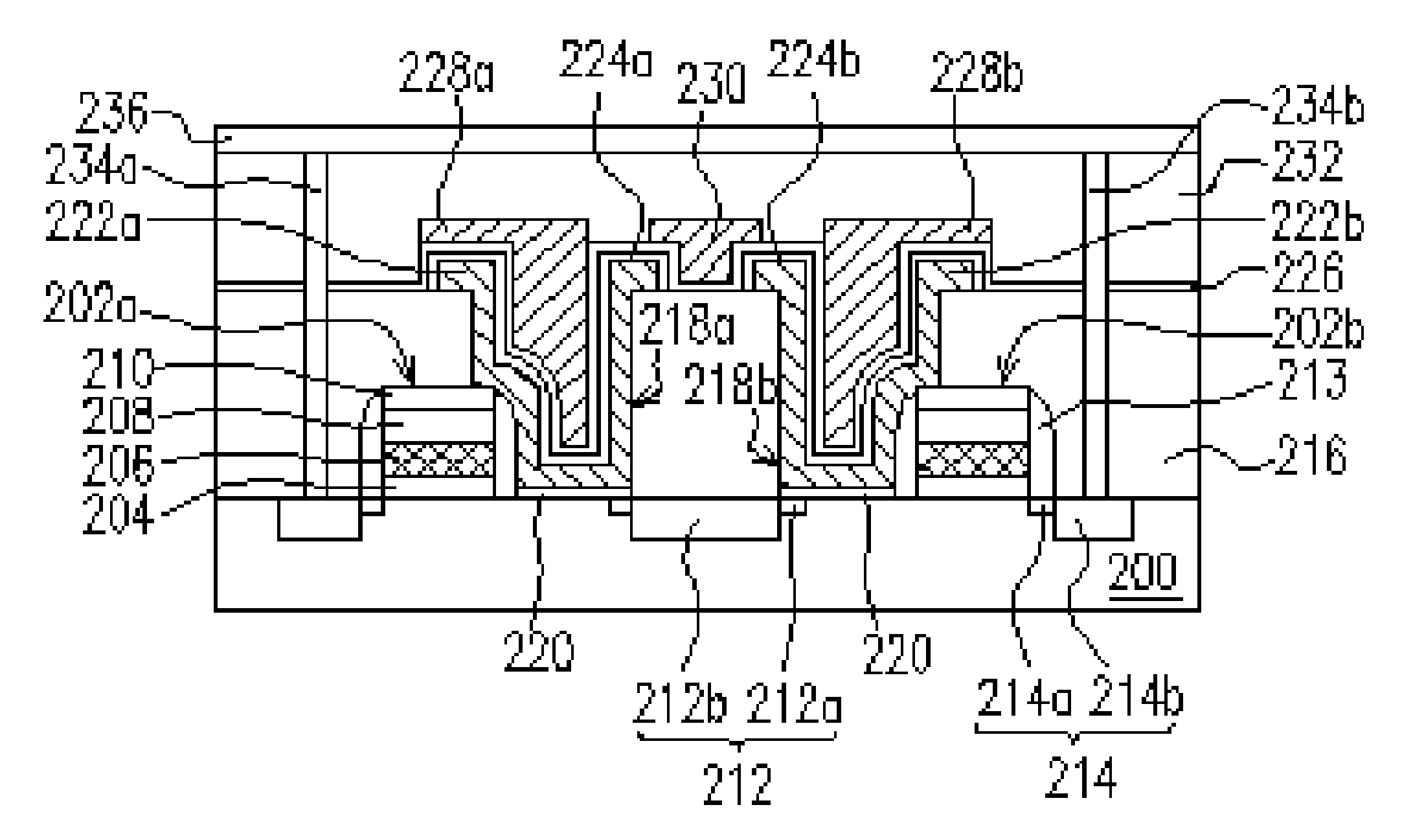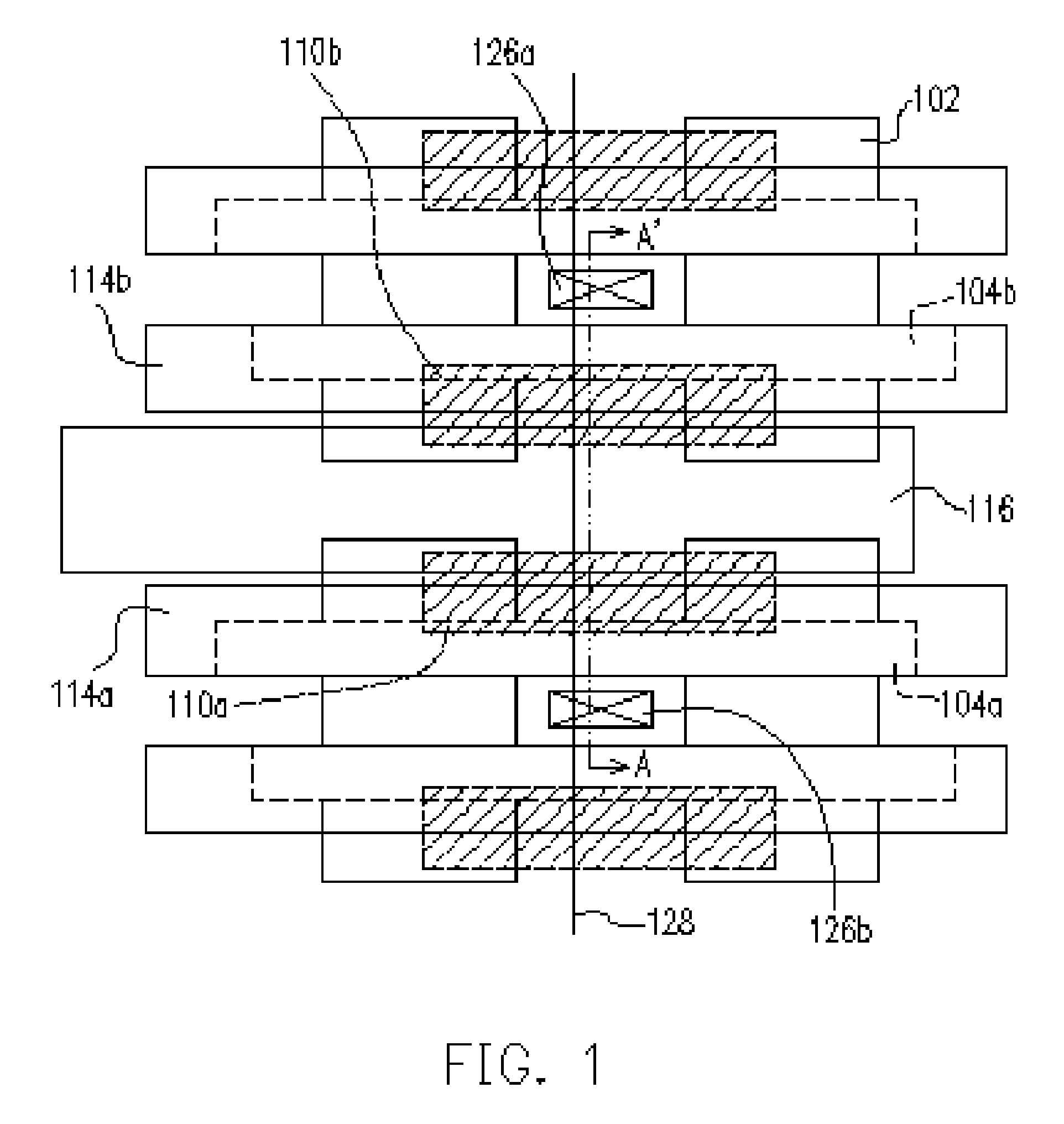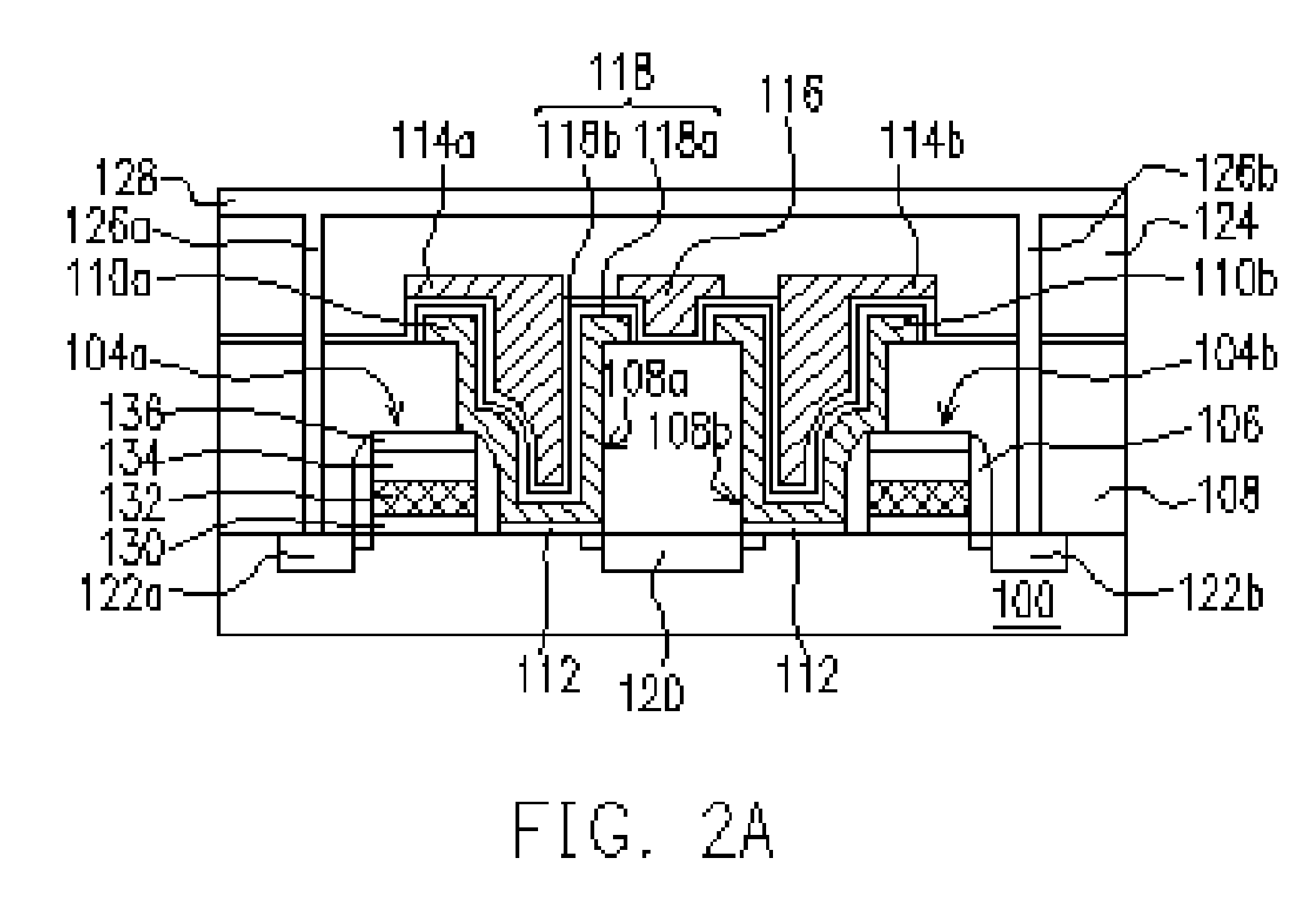Split gate flash memory cell and manufacturing method thereof
a technology of flash memory cell and split gate, which is applied in the direction of semiconductor devices, basic electric elements, electrical equipment, etc., can solve the problems of erroneous data interpretation, difficult control of the amount of electron discharge, and negative charge leaving the floating gate, so as to increase the gate coupling ratio and the effect of device integration
- Summary
- Abstract
- Description
- Claims
- Application Information
AI Technical Summary
Benefits of technology
Problems solved by technology
Method used
Image
Examples
Embodiment Construction
[0028]FIG. 1 is a schematic, top view diagram illustrating a structure of a split gate flash memory cell according to the present invention. FIG. 2A is a schematic, cross-sectional view diagram of a split gate flash memory cell according to one aspect of the present invention. FIG. 2A is a cross-sectional view diagram of FIG. 1 along the cutting line A-A. FIG. 2B is a schematic, cross-sectional view diagram of a split gate flash memory cell according to another aspect of the present invention. In FIGS. 1, 2A and 2B, the same reference numbers are used in the drawings to refer to the same or like parts.
[0029] Referring to both FIGS. 1 and 2A, the flash memory cell of the present invention is formed with a substrate 100, a device isolation structure 102, an inter-layer dielectric layer 108, a floating gate 110a and a floating gate 110b, a tunneling dielectric layer 112, a control gate 114a and a control gate 114b, an erase gate 116, a gate dielectric layer 118, a source region 120, a...
PUM
 Login to View More
Login to View More Abstract
Description
Claims
Application Information
 Login to View More
Login to View More - R&D
- Intellectual Property
- Life Sciences
- Materials
- Tech Scout
- Unparalleled Data Quality
- Higher Quality Content
- 60% Fewer Hallucinations
Browse by: Latest US Patents, China's latest patents, Technical Efficacy Thesaurus, Application Domain, Technology Topic, Popular Technical Reports.
© 2025 PatSnap. All rights reserved.Legal|Privacy policy|Modern Slavery Act Transparency Statement|Sitemap|About US| Contact US: help@patsnap.com



